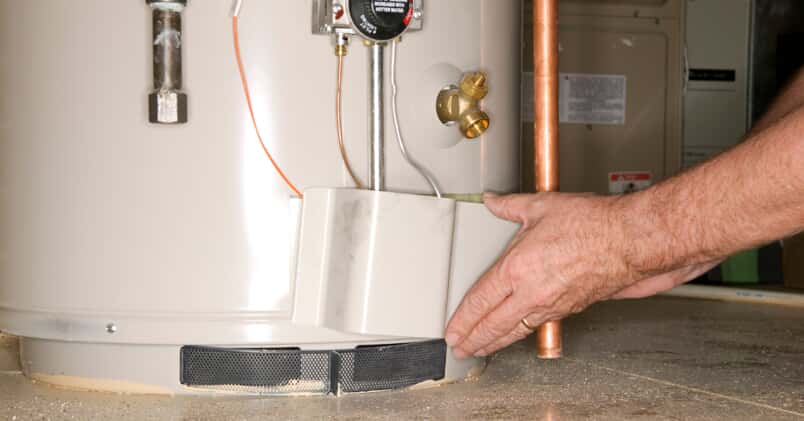Flushing your water heater is an essential part of maintaining your appliance. Read on to learn the benefits and steps to complete this task yourself this season.
Do I need to flush my water heater?
Short answer: Yes. Flushing your water heater prevents buildup from minerals such as magnesium, calcium, and limescale. If you don’t flush your water heater, these minerals can accumulate on the heating element and interfere with its efficiency and lifespan. In extreme situations, it can even cause your water heater to fail completely.
When do I need to flush my water heater?
Flushing your water heater once every year is the typical recommendation for most areas. If you live somewhere with extreme water hardness, flushing the tank every six months will keep sediment from accumulating too heavily.
How do I flush my water heater?
Our plumbing pros share nine easy steps to flushing your water heater:
1. Turn off the cold water supply
Locate the water supply shut-off. This is usually found where the main water supply line enters your home. If you have a water softener, you can also use the supply shut-off valve there.
2. Turn off your water heater’s thermostat
Turning the thermostat off prevents the appliance from turning on and trying to heat water as you’re working on it. This step is essential: if the heating element turns on after the water has drained out, it can damage the tank. For homes with gas-powered appliances, be sure to close the gas supply before moving on.
3. Connect a drain hose
The drain hose is how we’ll drain water from the tank without flooding your home. Locate the drain valve (likely near the bottom of your water heater’s tank). Connect a hose to this valve and either:
- Coil the hose into itself, creating a small circle to catch the released sediment.
- Extend the hose out and into a bucket.
- Let the water drain outside. If you choose this option, make sure to extend the hose past the foundation of your home — otherwise, you could end up with moisture problems.
4. Open hot water faucets in the house
Opening the faucets helps to create a vacuum, which will make your tank drain more quickly.
5. Drain the tank
Open the water heater drain valve and let gravity do the rest! The water should flow on its own — if it doesn’t, sediment could be clogging the drain valve. Follow these steps to clear it:
- Open the temperature pressure release
- Once the water has drained, use a vacuum to remove the blockage from the valve
You don’t have much to do during this step, but stick around and monitor the situation as your water heater drains. Warn small children and keep an eye on pets as the water drains as it can still be hot and could cause scalding.
6. Rinse loose sediment from the tank
Once your water heater is completely drained of sediment, you’ll want to rinse the tank to grab anything that is stuck around the inside. Turn the cold water supply back on (see step 1 above) and let the water run through the tank and out the hose. Let the water run for a few minutes. When the stream runs clear, turn the cold water supply back off.
7. Clearing the drain valve
Disconnect the hose and use a shop vac to remove any sediment in the opening of the drain valve. Sediment buildup in this area prevents a proper seal and can make your water heater tank leak. When the drain valve is cleared, close it up and turn the cold water supply back on.
8. Clear all faucets
As your tank fills with water, leave the faucets open. You can close them again once the water begins to flow out — this step prevents air from becoming trapped and allows any rust or sediment to drain from your plumbing. When the water is running clear, you can move on to the final step.
9. Reset water heater
If you have a gas-powered appliance, reopen the gas supply valve and follow the manufacturer’s recommended process for reigniting the pilot light. For electric appliances, simply turn on and reset your water heater to the desired maximum temperature — most water heaters are set to 140° F, but setting the temperature to 120° F will save energy and reduce the chances of getting burned by hot water. The time it takes to refill the tank varies depending on the size and age of your system, but the standard water heater tank should refill in 30 – 40 minutes.
Congratulations! You’ve successfully flushed your water heater. This task is simple enough in theory, but if you run into any problems or would be more comfortable hiring professionals to take care of this task for you, give Steve’s Plumbing & A/C Service (808) 563-4054. a call! (808) 563-4054


